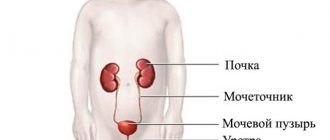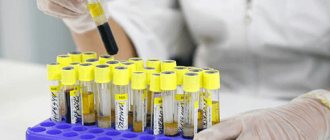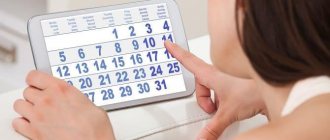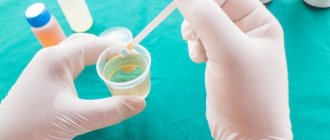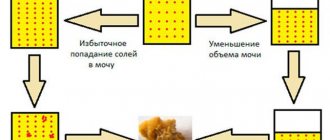Urinalysis is one of the fundamental types of research in the diagnosis of diseases of the genitourinary system. Collecting urine for analysis is not difficult for an adult, but this cannot be said about young patients – children.
Depending on the age of the child, urine collection can be divided into degrees of difficulty. So, in infancy, the difficulty lies in the inability to control the process of urination. In the period from 1 year to three years - inability to use the potty.
Collecting urine in children over three years of age is minimally difficult, depending on the child’s mood. The older the child, the easier it is to carry out this procedure, but sometimes factors arise that make urination a painful process.
There are not many ways to collect urine from a child. Those mothers who set out to collect urine are able to complete this task on the first day. Before you figure out how to make a child urinate, you should know the rules for collecting the analysis and its features.
When is a general urine test prescribed?
A general urine analysis is part of the mandatory studies, especially at the outpatient and outpatient stages. Judging by the change in the analysis indicators, the therapist makes a conclusion about whether you need qualified medical care, or whether you can get by with his efforts and help at the appointment.
In addition, the analysis is mandatory for all patients with pathology of the urinary tract, as well as with systemic metabolic disorders or hereditary diseases.
It is mandatory to conduct such an analysis when determining disability group indicators. In addition, this analysis is included in the mandatory list of tests for preventive examinations, employment, obtaining a driver’s license, and when submitting children’s documents for enrollment in a kindergarten or school.
This analysis is also used as one of the dominant ones in identifying pathologies of the reproductive system (for example, trichomoniasis or gonorrhea).
Preparing for a urine test in children
It's not so easy to get a one-year-old baby or a month-old baby to pee in a jar
Well, he cannot understand the importance of the prescribed urine test for diagnosis and further treatment. Collecting urine is difficult, sometimes almost impossible
The kid knows many ways to manage and not get caught in a jar. Preparing for a urine test in children is more complex and directly depends on the parents’ awareness of the importance of the study.
Let's start with the fact that preparing for a urine test begins with familiarizing yourself with these rules. Next, the child needs to be washed in order to wash away the epithelium from the external genital organs (which will spoil the urine test). You need to wash with plain water; you should not use any soap.
Preparing for a urine test includes choosing the right urine container. It should contain almost all the urine and be clean and transparent (so that the color of the urine can be assessed). Glass or plastic - it doesn't really matter.
The most incorrect way is to collect urine for analysis from a diaper. False because diapers use gel, urine is filtered through several layers of material, which leads to a change in the properties of urine and the appearance of tissue particles in it.
https://youtube.com/watch?v=a0fWMoZPYxM
Another incorrect method for collecting urine is to pour it into a clean jar from a pot. If the pot is aluminum, then it should be boiled before urine gets into it. It is impossible to boil a plastic pot, so the resulting urine test will “delight” with an increase in the level of leukocytes and bacteria.
A fairly simple and common method of collecting urine for analysis is in a baby food jar. Before use, the jar must be thoroughly washed, boiled and dried (not with a towel, but with air). You need to wash the jar thoroughly, because the remains of sweet food will lead to the appearance of glucose as a result of the test. After washing the child, place the jar. It is better to do this in the bathroom, as the sound of flowing water stimulates urination.
For the youngest children, urinals help collect material for urine analysis. They are plastic bags with a base that is glued to the cause site. First we put on a urine bag, and then a diaper. Remember that one portion of urine is needed for analysis, so check from time to time to see if it is full.
Preparing for a urine test. oddly enough, it includes such a factor as delivery time to the laboratory. It is better to collect a morning urine sample and deliver it for testing in the morning, when most tests are performed. The collected urine can stand for no more than 4-6 hours, then its properties change. Be prepared to deliver urine as quickly as possible
Preparing for a urine test in children also implies the absence of influence from external factors, such as taking medications or changing place of residence. If a child is taking any medications, it is worth considering that many of them are excreted by the kidneys and can change the test results. It is advisable to temporarily stop taking them, of course, if possible.
It is better to collect urine for sterility testing in special sterile measuring containers.
How many diapers does a newborn need per day?
The answer to this question worries many young mothers. They want to know at least approximately how many diapers they should buy for the first time. The numbers are very approximate and depend on the frequency of urination and bowel movements, as well as on the age of the baby. The daily volume of urine can range from 300 to 500 ml, single (one urination) - from 20 to 35 ml. In the first weeks of life, stool can occur after almost every feeding.
Pediatricians advise changing newborn diapers before or after feeding, before bedtime or when the child wakes up, and also before going for a walk. This is approximately every 2-3 hours.
In case of unforeseen situations, the diaper is changed more often and there is no need to wait a certain time. If you come to a massage therapist, even if the baby’s diaper is barely full, after the procedure it is advisable not to put it on, but to use a new one. In case of bowel movement, the diaper must be changed.
Every time you change a diaper, your baby should be washed with just water or soap and water after a bowel movement. It is recommended to use a special protective diaper cream with chamomile or calendula. You don’t have to immediately put on a new diaper, but put the baby naked on a diaper and let him lie down. It should be remembered that the optimal temperature in the room should be about 20-22°C.
On average, the frequency of changing a disposable diaper for a newborn is up to 10 times a day. As your child ages, he or she will need fewer diapers. By the age of six months, up to 5 pieces per day are enough for children (4 during the day + 1 at night). This is due to the fact that older infants do not have bowel movements as often as newborns. The number of diapers used is also reduced.
In general, each mother herself determines how many times her child needs to change his diaper. At the same time, she takes into account the individual characteristics of her baby.
From newborn to 1 month
Newborn babies use more diapers than older babies. So, if your baby is less than one month old, you can expect to change 6 to 10 diapers per day. Around this age, your baby may have bowel movements 3-4 times a day and pee after each feeding.
Child over 1 month
Once your baby is one month old, you will notice that diapers will become less dirty and you will see that your baby may need 4 to 6 diapers a day. If your baby is exclusively breastfed, he or she may have dirtier diapers than a baby who eats formula. Breast milk is easier to digest, which means more bowel movements means more diaper waste.
How to get your child to pee for tests without screwing it up
Hello, my dears! Today, from me, Nadezhda Nikolaeva, the author and creator of this project, a generally unexpected topic regarding the collection of analyzes. Surely all of you, like any other parents of small children, have at least once encountered the problem of getting tested.
No, I’m not talking about how kids are usually afraid to have their blood tested, how they scream, get hysterical, cry and resist with all their might.
We will talk about something a little different, namely: how to make a child pee for tests? Although this sounds somewhat funny, it often really becomes a whole problem! So, maybe there are some secrets that mothers don’t know about?
What to do if the child does not want to write?
Due to significant differences in the structure of the external genital organs of boys and girls, their technology for collecting urine may differ. As you might guess, collecting urine from a boy is much easier than from a girl.
If the child is still very small or, on the contrary, has already grown up and knows how to go to the potty, you can be patient and try to catch the stream of urine in a jar or container.
But what if the child, for example, is already 2 years old, but has not yet made friends with the potty, but is very active and will not lie or sit quietly, leaving you no chance to watch for the desired result with a jar in your hands?
By the way, such a urinal can be used to collect urine not only from children aged 2-3 years, but even from newborns.
True, I personally didn’t get along with the urinal at all, maybe you’ll strike up a friendship with it….
Collecting urine from a girl is not so convenient. If the baby is a newborn or she is only a few months old, you can carefully place a clean saucer, scalded with boiling water, under her (but so that it does not cause discomfort to her) and wait for her to pee on it. This is how our mothers most often collected urine for analysis.
But how to collect urine from a 2-year-old girl? Of course, you can try putting a saucer on the bottom of the pot (since you can’t just write in the pot to collect samples).
Or try attaching a urinal and putting a diaper or panties on the baby so that she doesn’t pull off the urinal. However, usually by the age of 2, I personally managed to put my daughter in the bath, quickly wash her, and she would pee on her own. But by this time we were no longer peeing at night, so there was enough urine to come out naturally.
We've sorted this out. The very last and at the same time the most difficult question remains: how to collect a urine test if the child does not want to pee? Each has its own approach, choose the one you need (just hurry up before the baby starts to be capricious and no longer wants to squeak out of spite!)
So, there are several proven folk methods:
- Open the faucet in the bathroom, take the baby in your arms in the drop-off position and wait (with a jar at the ready) for the sound of pouring water to act as a stimulant on the baby’s body.
- You can also try pouring water from one cup to another, the effect should be the same as in the previous point.
- You can try massaging the child's lower abdomen, from the navel down to the genitals.
- If you need to collect urine from a girl, you can wipe her labia with a wet cotton swab previously soaked in warm water.
- Give the child some water to drink.
- Just wet the legs and lightly the genitals.
And the most important thing is to be patient! It usually takes a long time to collect urine from a child, so you can’t do it without patience.
How long can a child be in a diaper per day?
The question arises : how long a day can a baby stay in a diaper?
You don't have to worry about the amount of time you spend in a diaper. It is important to understand that a dry diaper will not cause any harm to the baby. Just change it more often. Saving on diapers will only lead to serious problems - diaper rash, redness, irritation. It is extremely difficult to deal with these problems; they bring discomfort to the child. The child becomes irritable and cries constantly. It is very difficult, sometimes unbearable, for parents to endure the constant crying and lack of mood of the child.
Don't skimp on diapers.
Diapers do not cause problems with the baby's skin and diaper rash, but it is important to use them correctly and follow the rules of hygiene . To prevent allergies, you should use disposable diapers and change them when they are full, but at least once every five to six hours during the day and once every 12 hours at night. We recommend changing diapers for newborns - the more often the better.
How many hours a day can you be in a diaper?
It is recommended to change diapers every 3 hours and air baths for 5-15 minutes before each diaper change are required.
There are no special recommendations on which diapers are best to use and in what cases. Almost all manufacturers use hypoallergenic, breathable materials, thanks to which the baby’s skin does not dry out. However, some brands produce special overnight diapers that have greater absorbency than regular diapers.
Therapeutic measures
Treatment of urethritis in children is carried out using drug therapy. The following types of treatment are used:
- etiotropic, aimed at eliminating the cause of the development of urethritis;
- symptomatic, aimed at reducing the severity of symptoms.
In severe cases, with an ongoing chronic process, surgical treatment is resorted to. The sclerosed tissue is excised to restore the passage of urine through the canal. In inoperable situations, a permanent drainage is placed in the bladder area.
Before using antibacterial drugs, the attending physician conducts the necessary examinations of the patient.
Pay attention to the external condition of the urethral area, conduct laboratory and instrumental research methods. Based on this, the doctor determines the need to use an antibiotic.
For antibacterial therapy of pathology in a child, the following groups of drugs are used:
3rd generation cephalosporins. They have pronounced antimicrobial activity and reduce the intensity of the inflammatory process. The duration of use of the drugs is 7 days. Penicillins. They use protected penicillins that are not destroyed by microbial enzymes
Use with caution if you have a history of allergies. Fluoroquinolones. Used in the treatment of urethritis after conducting a bacteriological examination of a smear from the urethra.
In case of severe pain, it is recommended to use anti-inflammatory drugs before visiting a doctor. These include the following medicinal substances:
Use drugs for symptomatic therapy only until you consult a doctor.
Anti-inflammatory drug compounds will reduce the severity of pain and help improve the condition.
If, against the background of such imaginary well-being in the child’s condition, one does not consult a doctor, the acute process will turn into chronic. It is necessary to seek the help of a doctor and carry out etiotropic therapy.
The development of a chronic form of urethritis requires treatment. The goal of therapy during this period is to achieve stable remission, in which exacerbation will not occur.
This reduces the risk of tissue sclerosis in the urethral area with the ensuing consequences.
Therapy consists of several stages:
- developing in children and parents an understanding of the correct lifestyle;
- periodic physiotherapeutic procedures;
- Spa treatment.
A proper lifestyle is necessary to maintain normal immunity. This consists of good nutrition with vitamins and minerals, and constant physical activity of children.
Since any pathology of the urinary system indirectly indicates a problem with the immune system, this aspect in the treatment of chronic pathology comes to the fore.
Physiotherapy procedures are used to improve immunity, increase blood supply to the required area, increase hemostasis and metabolic processes.
Denas therapy and magnetotherapy are used. If necessary, resort to electrophoresis using drugs. The procedures are carried out in courses, several times a year.
Treatment of pathology in children is associated with the characteristics of the body, functioning and predisposition to a number of diseases.
Therefore, if pathology develops, parents need to notice the problem in time and contact a pediatrician.
Eliminate constipation
How to force yourself to pee if you don’t want to because of existing constipation?
If you suffer from constipation, this can put pressure directly on the bladder as well as on the urethra, preventing urination. Add foods that contain large amounts of fiber to your diet. You also need to do more physical exercise. But if the problem does not go away, then consult a doctor.
Try not to resist the urge to defecate, as this can only make constipation worse.
How to collect urine from a baby?
Congratulations, you are 3 months old! The days of difficult adaptation after childbirth and sleepless nights with a baby in your arms are behind you. The baby is already holding his head up, making funny noises and delighting you with a charming toothless smile. But it’s too early to relax.
Getting your baby tested is not an easy task.
I realized this when, at the next examination, the pediatrician wrote out a coupon for us to donate blood and urine. With the first analysis, everything is clear: we already went through this in the maternity hospital. But how can you make a baby pee, and even in a jar?
Without thinking twice, I asked the doctor about it. And I immediately regretted it. She looked at me with widened eyes and muttered: “Look on the Internet. See what a line there is to get into the office!” She didn’t care that it was my first child and I had no experience in taking children’s tests. Arriving home, I called my mother, went through the forums and armed myself with everything I needed at the pharmacy. Fortunately, the pharmacist was friendly and gave some useful advice. As a result, we successfully collected urine and passed the test.
Unfortunately, not all doctors provide full consultation.
If you come across an equally taciturn pediatrician, don’t despair. There are several simple ways that I want to talk about in this article.
Answers from parents from forums
Here we have collected some answers from mothers left on the Internet. Perhaps they will help you navigate.
- When I was really little - 8-9 diapers.
- 6-8 pieces, the child is in them all the time.
- While the small 9-11 diapers are gone, take the largest pack, it will be more economical!
- If you constantly wear diapers, then a newborn needs 6-8 of them per day; the older the child, the less consumption. Now there are 4 diapers a day.
- Constantly wearing diapers, at least 7 diapers a day. It is believed that the more often you change, the less harmful the diaper is, I myself have heard this from doctors more than once. When the diaper is dry, what kind of incredible harm does it cause, as supporters of the scoop like to fear? Sorry, but I don’t consider a wet gauze diaper “healthier” at all.
- The diaper is designed to last approximately 4 hours, there are 24 hours in a day, 24/4 = 6 pieces. Another + 2 just in case. Total 8.
Survey. How many diapers do you use per day?
128 mothers with newborn babies aged from 1 to 3 months took part in the survey.
| Number of diapers, pcs. | Voted | Percent, % |
| 1-5 | 0 | 0 |
| 6-7 | 19 | 24.32 |
| 9-10 | 63 | 80.64 |
| 10-12 | 28 | 35.84 |
| 12-15 | 18 | 23.04 |
Conclusion
In the first 1-3 months – 9-14 diapers; 3-5 months – 8-10 pieces; 5-10 months – 7-9 pieces. From 1 year 4-6 diapers - in the morning after sleep (1), during the day (1), before going outside (1), before going to bed in the afternoon (1), during the day (1), before going to bed at night (1 ).
Diapers 1 size (one) for newborns
- Pampers Premium Care 1 Newborn (2–5 kg)
- Huggies Elite Soft 1 (0–5 kg)
- Dada Little One 1 Newborn (2–5 kg)
- Merries Newborn (0–5 kg)
Diapers size 0 (zero) for premature babies
- Pampers Premium Care 0 Micro (0–2.5 kg)
- Huggies Elite Soft 0+ (0–3.5 kg)
Rules for collecting stool
Before prescribing a stool test, the attending physician tells the patient how to properly take a stool test. By remembering a few rules, a person will be able to successfully pass the test and get the correct results.
Rules for preparing for stool analysis
- A week before taking a stool test, you should not take medications that will distort the true results. Rectal suppositories are not used the day before the test. If a person is taking medications that cannot be stopped, he warns the attending physician about this.
- Stool collection occurs after spontaneous bowel movement. To prepare the body for stool analysis, laxatives and enemas should not be used.
Allowed foods: vegetables, dairy products, potatoes, pasta.
- Before the study, the patient must prepare the body, namely, avoid fatty, fried, salty, and spicy foods. Allowed foods: vegetables, dairy products, potatoes, pasta. Limit consumption of foods containing iron.
- If a study is carried out on an infant, then a new product cannot be introduced to him. It may be poorly absorbed by the digestive tract upon initial use.
Rules for collecting stool for analysis
Before prescribing a stool test, the doctor explains to the patient how to properly collect stool.
- Female patients must empty their bladder before defecation. Urine that gets into the excrement will change the results of the test.
- You should not wash yourself the night before defecation, since parasite eggs located on the sphincter will be washed away with water. The result will be false negative.
- The container for collecting feces on which defecation is performed must be clean and treated with an antiseptic.
- Feces collected from a baby's diaper are acceptable for testing.
- Testing is not carried out on menstrual days.
- Collect stool samples in a clean container.
- To properly collect stool, you must use disposable gloves and a spoon from the container. Foreign objects should not get into the excrement.
- It is recommended to take tests in the morning.
Rules for storing stool before analysis
Before collecting stool, it is important to check with your clinical laboratory physician on how to store stool for analysis. Feces are collected in a disposable plastic container, previously purchased at the pharmacy. Inside it there is a special spoon that is used to collect a piece of feces
The use of cans and matchboxes is unacceptable; they contain foreign microorganisms that affect the test result. For the most accurate results, the material is taken to the clinic immediately after its collection. If defecation occurs in the evening or at night, the container is placed in the refrigerator, provided that it is delivered to a medical facility in the morning. The material is kept at a temperature of 3 to 9 degrees. It is prohibited to store feces in the freezer. When handing over stool to a laboratory assistant, they write on the jar how long the stool was stored. If the sample is left at room temperature for a long time, the excrement rots and decomposes. The results will not be accurate.
How many diapers do you need per day according to age scale (up to 1 year)
Here in the following table we have estimated how many diapers your baby might need on a daily and monthly basis.
| Child's age | Diaper use per day | Diaper usage in one month |
| 0 – 1 month | 10 – 12 diapers | 320 diapers |
| 1 – 5 months | 8 – 10 diapers | 240 diapers |
| 5 – 9 months | 8 diapers | 240 diapers |
| 9 – 12 months | 8 diapers | 240 diapers |
How long does 100 diapers last for a newborn?
- For a baby aged 0 to 1 month, 8 to 11 days will be enough.
- A newborn aged 1 to 5 months is 10–13 days old.
- For babies aged 5 to 9 months – 12 – 14 days.
- For a baby aged 9 to 12 months (up to a year) – 12 – 14 days.
Urine analysis in children
Such an analysis is one of the simplest ways to diagnose various pathologies. It is by urine readings that the presence of the disease can be determined even before symptoms appear.
Urine is a liquid secreted by the kidneys during vital activity. It provides information about the condition of the kidneys and the body as a whole, and can show the presence of a hidden inflammatory process or the onset of any disease.
Based on the results of the analysis, one can judge the effectiveness of the chosen treatment.
The importance of this analysis for children is undeniable, not only during therapy, but also for preventive purposes.
A small child cannot say that something hurts. But analysis is able to recognize the problem in time.
To raise a child healthy from the first days of life, help him strengthen his immune system and not blindly follow all doctors’ recommendations, watch the online course Healthy Child: Workshop for Mom>>>
No special preparation is required to take the analysis. The child must follow the usual way of life and nutrition.
Required dose
For analysis, 10 ml of urine is usually sufficient. Visually, this is the volume of liquid that will fill the container 1 cm in height. But for monthly babies, an exception is usually made, because it’s no secret how difficult it can be to collect material from such patients.
There are a large number of articles and tables on deciphering test results in the public domain. Please remember that these publications are for informational purposes only. Only a doctor can decipher the results, make a diagnosis and prescribe treatment!
Rules for collecting tests from infants
You know that urine analysis can be carried out using three methods:
- Traditional - according to Nechiporenko;
- Daily allowance according to Addis-Kakovsky;
- And analysis for calcium content according to Sulkovich.
You collect material for the first and third analysis in the same way, in the morning, taking an average portion of urine. You need to collect at least five milliliters of urine.
Of course, in the case of a baby, we are not talking about an average portion; here you can collect at least some urine. But if the attending physician insists on the rules, then you can try the collection method using a jar. You need to prepare three containers and when the baby starts peeing, quickly change the glass container.
The second Addis-Kakovsky analysis is collected throughout the day in one container, then everything is mixed well and two hundred grams of liquid is poured for analysis. This type of urine test in the case of infants causes the greatest difficulties:
- Firstly, the baby pees every half hour, or even more often, and he will not lie on the changing table all day;
- The package method is also questionable. In this case, you will have to experiment and use different methods throughout the day, depending on the situation.
General rules for all types of urine tests:
- Hygiene of the genital organs of the baby;
- Sterility during material collection;
- Sterility of the container in which urine will be transferred;
- Fast delivery of urine to the laboratory.
By the way, an interesting nuance. The rules for taking a urine test for adults have a clear list of what you should not eat or drink. The list includes medications, diuretics, salty, peppery, various seasonings, there is even a clause regarding beets and carrots, which can change the color of urine.
Interestingly, such restrictions also apply to infants. It is clear that your baby does not consume these products herself, but receives them in full through your breast milk. You should not eat cucumbers, melons or watermelons in the evening, as they are diuretics and, therefore, can affect the composition of your milk.
Pay attention to your diet if you want to get an adequate answer from the laboratory. And you can look at what a nursing mother can eat in the course: Safe nutrition for a nursing mother>>>. Regarding the quick delivery of the collected material to the laboratory, you should know that in warm conditions urine quickly changes its composition, especially in relation to the bacteriological background
Regarding the rapid delivery of the collected material to the laboratory, you should know that in warm conditions urine quickly changes its composition, especially in relation to the bacteriological background.
- How to bathe a newborn?
- First aid kit for newborns
- Caring for a newborn baby
Changing a diaper at night: do you need to wake up for this?
Some manufacturers create special lines of “night” diapers for newborns. Such diapers allow the baby to be dry during sleep and sleep soundly. They have a thicker layer and excellent absorbency.
If the child did not go out much at night, then there is no need to specially wake him up to change clothes. In other cases, even if it seems to you that the diaper is full, wait until he wants to eat and wakes up. Then you can carefully change his clothes.
Do I need to change my diaper at night?
The main thing in using diapers is the additional rest and peace of mind for a young mother. Such a mother will be able to feel all the joy of her new position and will give the baby more love, affection and attention.
What you should definitely not do
Sometimes a young mother is given harmful advice regarding the direct care of the baby. These also include improper urine collection:
- You should not do this - the baby pees in a diaper or on a diaper, after which the liquid is twisted into a container. Firstly, a diaper or diaper absorbs a large amount of liquid, so the collection will not be sterile, and the tests will be unreliable. In addition, this will filter the urine, and the results will also be distorted.
- The child empties into the potty, after which the liquid is poured into a container. It is impossible to sterilize the pot in such a way that in the future the urine will also be sterile. Neither chemical detergents nor ordinary boiling water can clean the pot as needed for optimal sample collection. Also, sometimes non-plastic pots have rust particles and chips. All this is unfavorable for collecting tests.
- Collect urine at a time convenient for the mother, put it in the refrigerator, and take it to the laboratory for testing in the morning. Such collection of analyzes will be ineffective, the results will be unreliable. You cannot store collected urine for more than two hours; it will not be possible to obtain reliable indicators.
- It is not necessary to wash the child. This advice is also bad, since various microbes will get into the container along with the liquid from dirty skin. In addition to the obligatory washing of the child, the mother or the person who will collect the analysis must thoroughly wash their hands.
Each parent chooses the most suitable method for collecting tests, thanks to which the procedure will be successful and quick. Attentive attitude towards the baby and the right actions will help to obtain the most reliable results in the future.
How to overcome the fear of urinating in public?
How can you force a boy or girl to pee for testing if the child is simply afraid to do it in a public place?
First of all, you need to practice progressive muscle relaxation. Many children have trouble urinating in public. If you, too, are afraid of urinating in the clinic, then relaxation will help. You should try to calm down before peeing in a public toilet.
Find a way to help you or your child distract from the obsession with urination. This way, your body will easily perform its natural function. The progressive muscle relaxation technique will help with this.
Alternately relax different muscle groups. You should start by relaxing your neck and shoulders, then move on to the muscles of your arms, hips, and torso. Gradually work your way down, reaching your shins and feet. Try to focus on the sensations in your muscles, while forgetting that you are currently about to use a public toilet. By relaxing your muscles and eliminating all anxious thoughts from your head, you can easily urinate in the clinic.
Find a way to distract your child or yourself from various disturbing thoughts. Try to occupy your own or your child's mind with something else without thinking about urination. This way you will make the whole process much easier. When planning to use a public restroom, take your mind off the topic.
If you have a smartphone with you, then read the news, let your child watch cartoons, listen to music. So, you can easily get distracted or distract your child.
Try to think of something else. Imagine a sporting event in your mind, try to remember your favorite musical melody or poem. You can also imagine a beautiful landscape, bring to mind a soothing picture, for example, the interior of a children's bedroom. You can also hum a song you like in your thoughts. In a word, anything that will help you distract yourself and not think about the need to use a public toilet will do.
Eating fruits
How to make a child pee in a jar? You can give him some weak tea to drink. Adults can use coffee for these purposes.
The fact is that these drinks have a diuretic effect. So, shortly before taking the tests, drink a small cup of black or green tea or black coffee. But it is necessary to observe moderation, that is, not to consume too much caffeine, in particular, before an upcoming visit to the doctor.
We continue to look at how to force yourself to pee for tests. Certain fruits have diuretic properties. A diuretic is a substance that promotes urine production and causes you to urinate more frequently. There are many fruits that are natural diuretics. Therefore, if you are wondering how to make a child or yourself pee, you should eat the following fruits before taking tests:
- Citrus fruits promote urination. If consumed regularly, such products also reduce blood pressure and prevent infection from entering the organs related to the urinary system.
- Watermelons. After eating a couple of slices of juicy and sweet watermelon, you will probably soon want to pee.
- Some products are made with fruit, such as cranberry juice or apple cider vinegar. The day before your test, drink a glass of juice or eat a salad dressed with apple cider vinegar.
How to collect biomaterial in plastic or glass containers?
A small child cannot control the process of urination. Therefore, this method will require the patience of parents and sleight of hand. Since urine for analysis must be clean, the container for collecting it must be purchased at the pharmacy or, if it is a glass jar, first boiled and dried.
The collection of biomaterial should be carried out taking into account the time interval of the child’s urination. Monitor in advance how the baby pees, set this time period and prepare for the next “lucky” moment. If you have a newborn girl, place the jar under her genitals while urinating, but do not touch her body, otherwise you may scare the baby. If you have a newborn boy, place the container under the stream, the main thing is to do it on time.
It is more difficult to collect urine from a girl using a glass, so resourceful parents suggest using an ordinary table saucer. It must be sterilized in advance and placed under the baby’s bottom. When the newborn baby pees, the biomaterial is poured into a sterile jar.
See a therapist for help
If the need to use a public toilet causes you anxiety very often, and also leads to various kinds of inconvenience at work or in other places, then you can seek professional help from a psychotherapist.
The fear of defecating in public toilets has been successfully treated with medications, behavioral psychotherapy and hypnotherapy. The psychotherapist must study your case, after which, based on your condition and medical history, he will select the most appropriate treatment method.
To do this, you can go to any paid clinic or look in your vicinity for a free or less expensive psychological assistance center. If you are studying at a large educational institution, it is worth keeping in mind that such centers often operate there.
